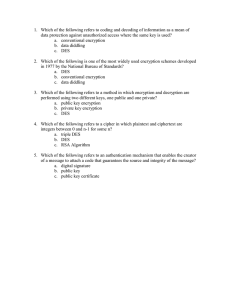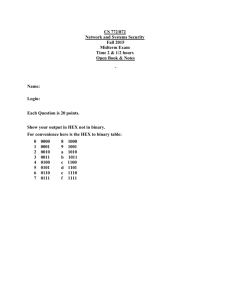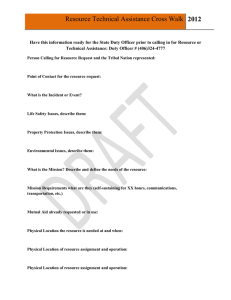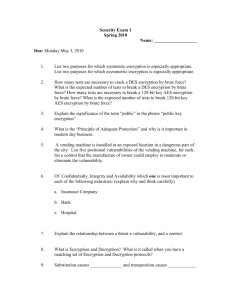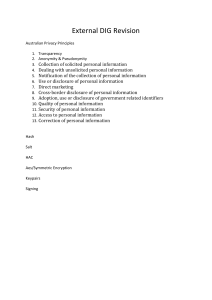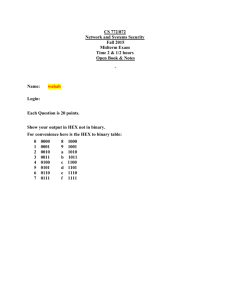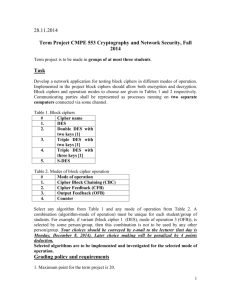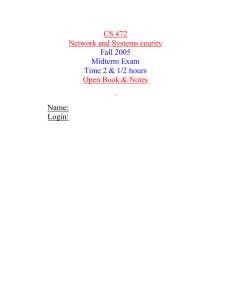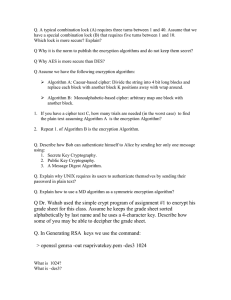Cryptography Review Questions and Problems
advertisement
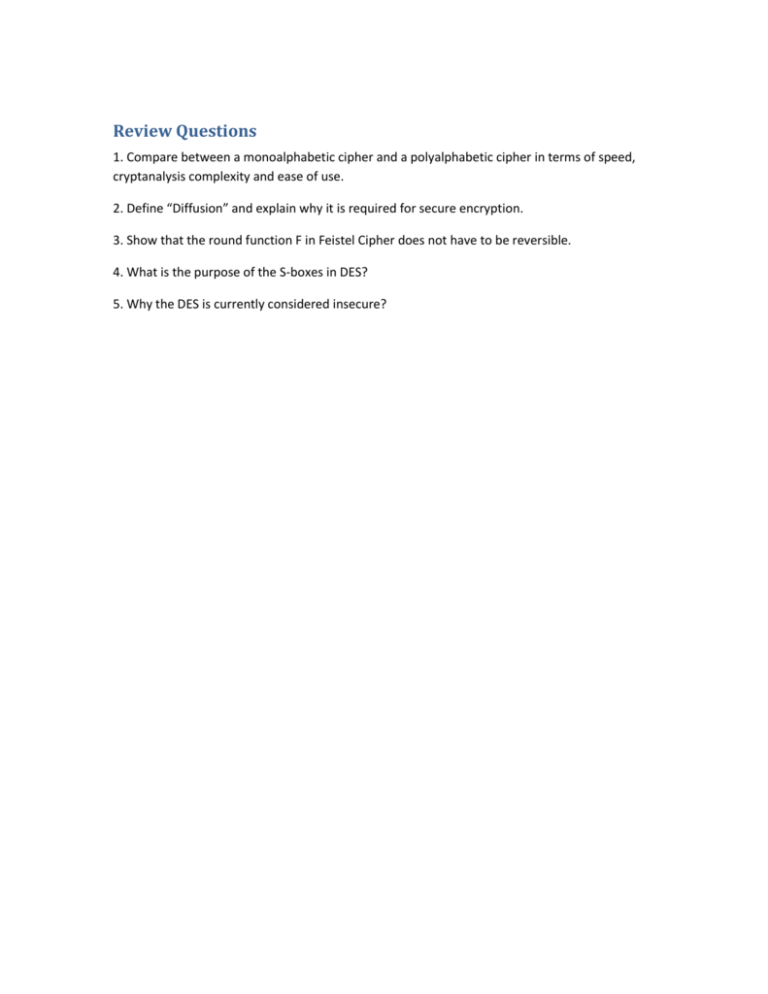
Review Questions 1. Compare between a monoalphabetic cipher and a polyalphabetic cipher in terms of speed, cryptanalysis complexity and ease of use. 2. Define “Diffusion” and explain why it is required for secure encryption. 3. Show that the round function F in Feistel Cipher does not have to be reversible. 4. What is the purpose of the S-boxes in DES? 5. Why the DES is currently considered insecure? Problems 1. How much time is needed to brute-force DES using a computer that can do 100 decryption/ microsecond? 2. This problem provides a numerical example of encryption using a one-round version of DES: Plaintext in hexadecimal notation: 93 DF AB C8 37 F2 14 38 in binary notation: 10010011 11011111 10101011 11001000 00110111 11110010 00010100 00111000 Key Hex 3B 38 98 37 15 20 F7 5E Binay 00111011 00111000 10011000 00110111 00010101 00100000 11110111 01011110 a. b. c. d. e. Derive K1, the first-round subkey. Derive L0, R0. Expand R0 to get E[R0], where E[·] is the expansion function of Figure 3.8. Calculate A = E[R0] K1. Group the 48-bit result of (d) into sets of 6 bits and evaluate the corresponding S-box substitutions. f. Concatenate the results of (e) to get a 32-bit result, B. g. Apply the permutation to get P(B). h. Calculate R1 = P(B) L0. i. Write down the ciphertext. This problem must be solved by hand.

